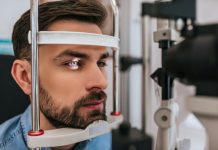
A new study has shown that patients with severe COVID-19 who require mechanical ventilation are at a higher risk of developing ventricular tachycardia, atrial fibrillation, and other heart rhythm disorders within six months of hospital discharge.
The study was presented at a scientific congress of the European Society of Cardiology (ESC).
The researchers used the Swedish ICU register to identify all COVID-19 patients treated with mechanical ventilation and discharged alive from an ICU between March 2020 and June 2021.
Each patient was matched by age, sex, and district of residence with up to 10 people in the general population.
Multiple compulsory national registries were used to record new diagnoses of arrhythmias after discharge from the ICU.
The study included 3,023 patients with severe COVID-19 who received mechanical ventilation at a Swedish ICU and 28,463 individuals from the general population who had not been in an ICU with COVID-19 requiring mechanical ventilation.
The average age of participants was 62 years and 30% were women.
The results showed that compared to the control group, patients who had severe COVID-19 requiring mechanical ventilation had a 16-fold risk of ventricular tachycardia, 13-fold risk of atrial fibrillation, 14-fold risk of other tachyarrhythmias, and a 9-fold risk of bradycardia/pacemaker implantation.
Dr. Marcus Stahlberg of the Karolinska Institute in Stockholm, Sweden, who was the lead author of the study, said that although the actual likelihood of developing heart rhythm disorders after severe COVID-19 is low for the individual patient, it is much higher than in those without severe infection.
He also noted that COVID-19 patients who need mechanical ventilation often have other conditions, and adding a heart rhythm disorder may lead to worsened health.
Dr. Stahlberg recommended that these patients seek medical attention if they develop palpitations or irregular heartbeats after hospital discharge so they can be evaluated for possible arrhythmias.
In conclusion, the study highlights the increased risk of arrhythmias following COVID-19, particularly in patients with severe infections who require mechanical ventilation.
As the world continues to battle the pandemic, hospital systems should prepare for an increase in patients requiring management for new-onset arrhythmias.
How to prevent heart rhythm disease after COVID-19
As of now, there is no surefire way to prevent heart rhythm disease after COVID-19, but there are some things you can do to lower your risk.
One of the best things you can do is to get vaccinated against COVID-19 to reduce your risk of developing severe illness that requires hospitalization and mechanical ventilation.
Additionally, if you have already had COVID-19 and were hospitalized, it’s important to follow up with your doctor and get regular check-ups to monitor your heart health.
Other ways to reduce your risk of heart rhythm disease include maintaining a healthy lifestyle, including regular exercise, eating a balanced diet, and avoiding smoking and excessive alcohol consumption.
Managing chronic health conditions, such as high blood pressure, diabetes, and high cholesterol, is also important.
Finally, if you experience symptoms such as palpitations or irregular heartbeats after hospital discharge, seek medical attention promptly so that you can be evaluated for possible arrhythmias.
If you care about COVID, please read studies about new evidence on rare blood clots after COVID-19 vaccination, and how diets could help manage post-COVID syndrome.
For more information about heart health, please see recent studies that Vitamin D deficiency can increase heart disease risk, and results showing Zinc linked to lower death risk in heart disease.
The study was presented at EHRA 2023.
Copyright © 2023 Knowridge Science Report. All rights reserved.



